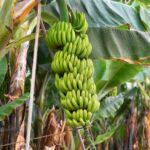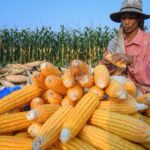The Fall Armyworm (Spodoptera frugiperda) has emerged as a significant threat to agriculture in South Africa, devastating crops and posing a serious challenge to food security and the agricultural economy. Understanding this pest and adopting effective management strategies is crucial for farmers across the region. Here are 20 essential points about the Fall Armyworm and advice on curbing its spread:
1. Origin and Spread
Originally from the Americas, the Fall Armyworm has spread to Africa, including South Africa, where it inflicts major damage on crops.
2. Wide Host Range
It affects more than 80 plant species, including maize, sorghum, soybeans, groundnuts, and cotton, making it a versatile threat.
3. Identification
The larvae are identifiable by their dark head and body marked with stripes running down its length. Mature larvae can reach up to 4 cm in length.
4. Rapid Life Cycle
The Fall Armyworm can complete its life cycle within 30 days in warm conditions, leading to multiple generations per growing season.
5. High Reproduction Rate
A single female can lay up to 1,000 eggs in her lifetime, contributing to rapid population growth and spread.
6. Damage
Larvae feed on leaves, stems, and reproductive parts of plants, leading to significant yield losses. They are known for their “army-like” movement, devouring almost everything in their path.
7. Early Detection is Key
Monitoring for early signs of infestation, such as egg masses and small larvae, is critical for effective management.
8. Use of Pheromone Traps
Pheromone traps can attract and capture male moths, helping to monitor and reduce the breeding population.
9. Integrated Pest Management (IPM)
Adopting IPM strategies, which combine biological, cultural, mechanical, and chemical methods, is the most sustainable approach to manage Fall Armyworm.
10. Biological Control
Natural enemies, including parasitoids, predators, and entomopathogenic fungi, can help control Fall Armyworm populations.
11. Chemical Control
Insecticides should be used judiciously and as a last resort, rotating active ingredients to prevent resistance.
12. Resistant Varieties
Planting crop varieties that are resistant or tolerant to Fall Armyworm can reduce damage.
13. Cultural Practices
Crop rotation, intercropping, and timely planting can disrupt the lifecycle of the pest.
14. Mechanical Control
Hand-picking larvae and destroying egg masses can be effective in small-scale farming situations.
15. Good Agricultural Practices
Maintaining field hygiene, including the removal of crop residues and weeds, can reduce pest habitats.
16. Soil Health
Improving soil health can enhance plant resistance to pests and diseases.
17. Community Action
Coordinated action among farmers can enhance the effectiveness of pest management strategies.
18. Education and Training
Farmers should be educated on identifying and managing Fall Armyworm, including safe pesticide use.
19. Research and Innovation
Supporting research into new and innovative control methods, including biotechnology, is crucial.
20. Government and Institutional Support
Effective pest management requires support from government and agricultural institutions, including access to information, resources, and emergency interventions.
Curbing the Spread
To curb the spread of Fall Armyworm, it’s essential for farmers to implement a combination of the strategies mentioned above, tailored to their specific circumstances. Early detection and rapid response are key. By staying informed, adopting integrated pest management practices, and working together, South African farmers can mitigate the impact of the Fall Armyworm and protect their livelihoods and food security in the region.








